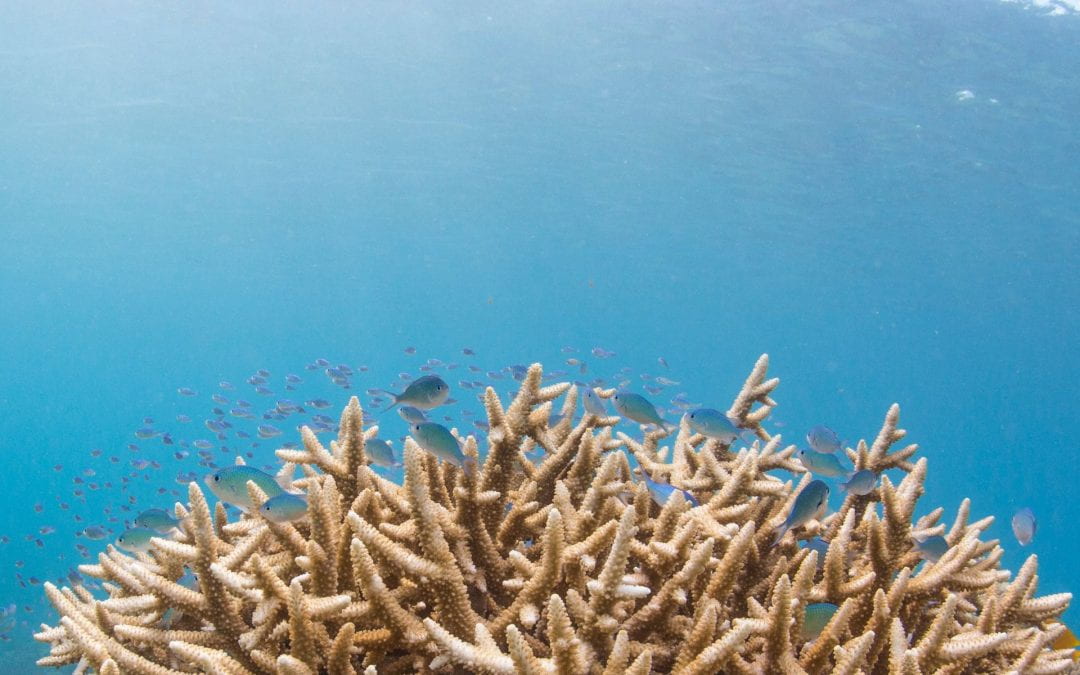By Joanne Ellis
Climate change is causing increased large-scale coral bleaching. That’s because when water is too warm, corals expel the algae living in their tissues, causing the coral to turn completely white.
If high temperatures persist, then the absence of these algae can cause coral mortality, because the coral is deprived of energy and becomes susceptible to diseases. Why is this so concerning? Coral reefs play a vital role in the seas. They recycle nutrients and protect coastlines by reducing wave damage. They support fisheries, offer potential for medicines, and provide social, cultural and recreational opportunities.
But we noticed something concerning in the Red Sea: Significant coral bleaching was occurring there in 2015, which was not among the warmest summers on record.
How did we do this research?
When the corals bleach, they record the event within their skeletons as a discrete high-density “stress band,” or a partial mortality scar. Corals lay these down in bands similar to how trees lay down growth rings each year. That means the presence of stress bands indicates a bleaching event and can be used to reconstruct and understand their bleaching events over time. In early 2019, a team of scientists spent one month taking more than 60 core samples from large corals. By taking coral cores and assessing the stress bands from their growth rings over time, we reconstructed the years that resulted in high bleaching rates alongside their associated environmental conditions. The coral cores provided evidence of stress events dating back almost 40 years with an increased occurrence of bleaching events in the last decade.
We then sought to understand what was causing the coral reef bleaching events and decline. What did we find?
We found that the highest proportions of stress bands were recorded in 2015, which was not among the warmest years on record. Each year nutrient-rich waters from the Indian Ocean up-well in the Red Sea, bringing nutrients (such as nitrates, phosphates and silica) to the surface. Upwelling involves the movement of dense cooler water from deep waters to the ocean surface. These deep waters are rich in these nutrients as a result of the decomposition and sinking of organic matter from surface waters. Visible imagery (via satellite) suggests the upwelling arrived earlier than usual in 2015. Our results clearly demonstrated that when heat stress combined with excess nutrients coral bleaching is exacerbated.
Why is this research important?
When more than one stressor co-occurs, such as heat stress and excess nutrients, synergistic interactions can exacerbate a decline. A synergistic interaction means the combined effects of stressors exceed their individual effects. That means that these combinations can wreak much more damage than one stressor on its own.
It also suggests ways to mitigate some of the damage. Previous studies have concluded that our ability to mitigate global change is negligible compared to our ability to manage local stressors, for example, controlling nutrient discharges or managing fishing pressure, to increase coral reef resilience. If the corals only experience heat stress, they are more likely to recover. But if they experience both heat stress AND nutrients, they are less likely to be resilient. By identifying local stressors and those that exert the largest synergistic effects, where systems are likely to be less resilient, we can maximise our effectiveness in making ecosystems healthier and more resilient.
Joanne Ellis is a Senior Lecturer in the Faculty of Science at the University of Waikato. She is an expert in coastal ecosystems and biodiversity.
Disclaimer: The ideas expressed in this article reflect the author’s views and not necessarily the views of The Big Q.
You might also like:
Q+A: How is climate change reshaping oceans and marine life?
How do we restore marine ecosystems? ▶

